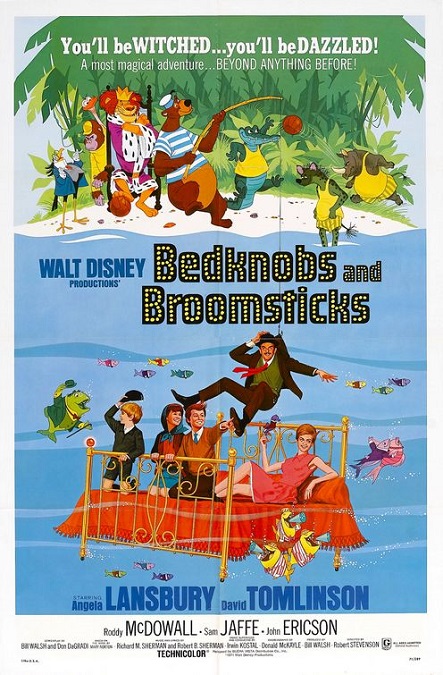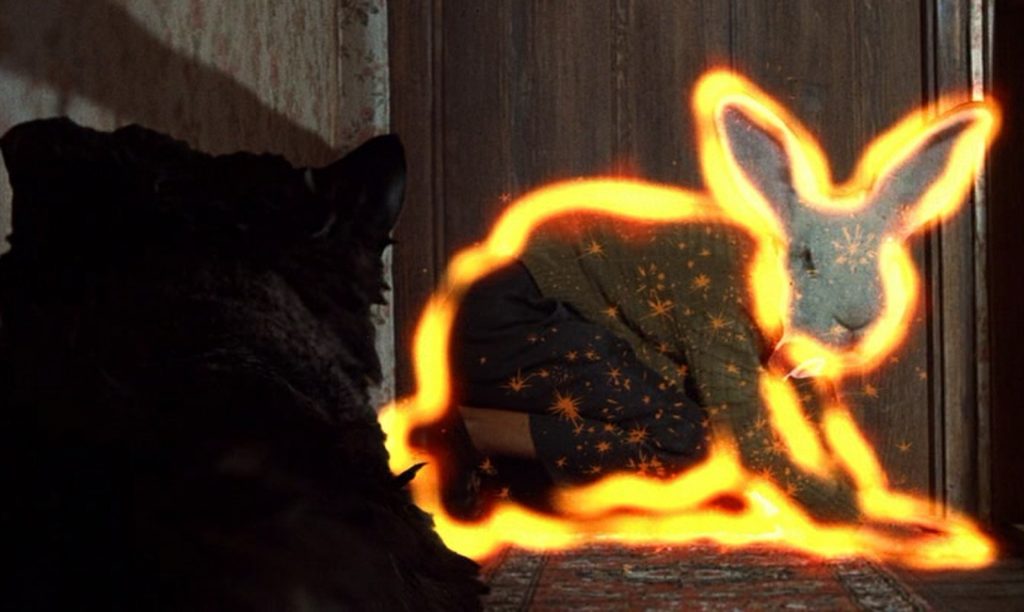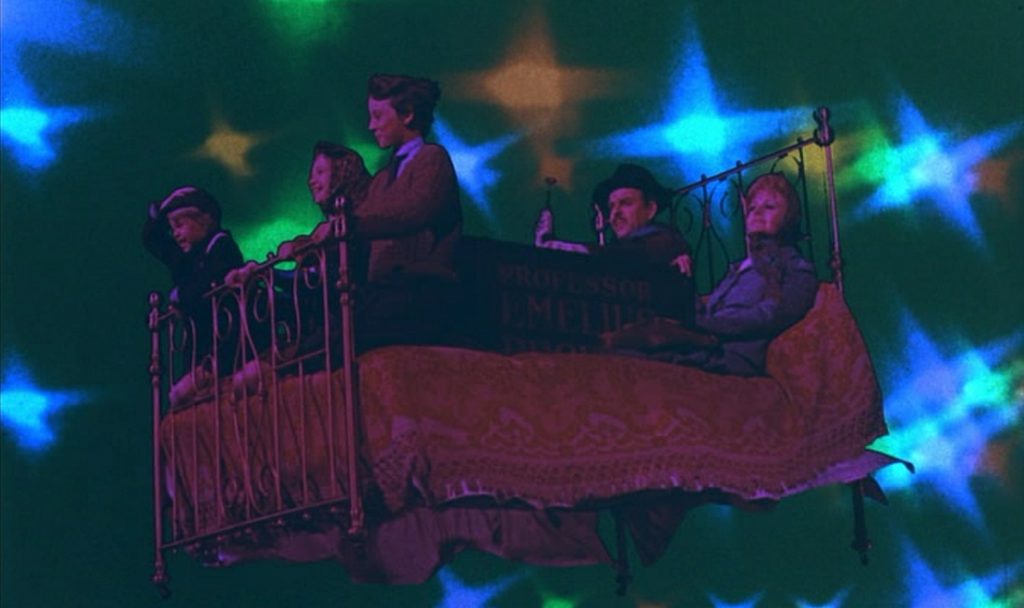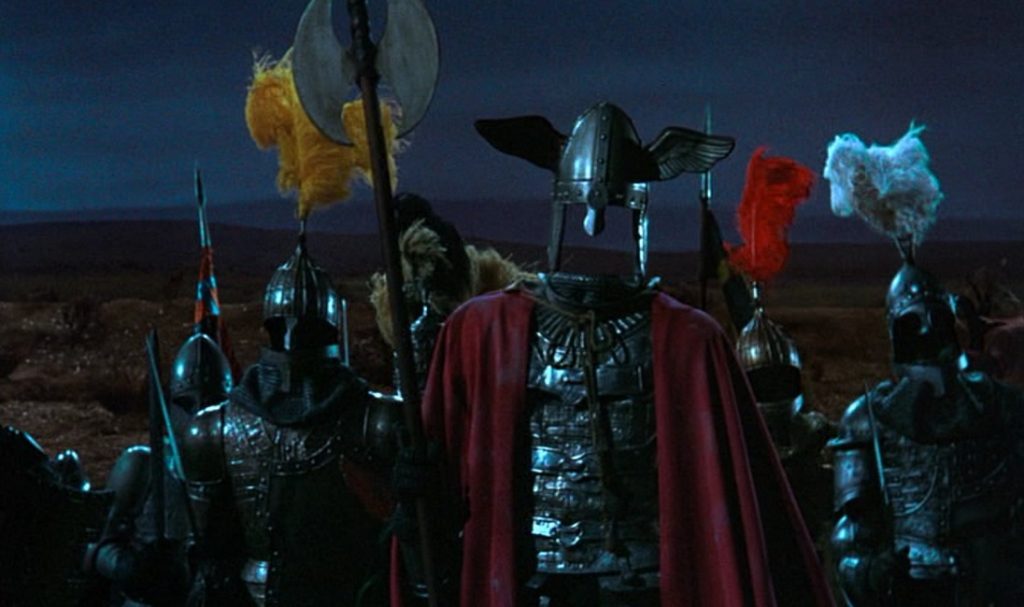



Bedknobs and Broomsticks – 1971 (WINNER)

It’s a good thing I’m only reviewing the visual effects for this film, and not the movie as a whole. I wouldn’t say it was a bad movie, but it was geared to children under ten years old. As for the effects, though the movie won the Oscar for the category, many of them looked like unfortunate throwbacks to the psychedelic 60s. They were bright and colorful, and occasionally fun to watch. But most of the garish visuals appeared to have an underlying cheapness to them that I’m having a hard time putting my finger on. Still, I applaud the academy for nominating something other than a war film, though even this fanciful children’s movie took place in the early 40s, and the buffoonish Nazis were still the main villains
The main concept of the plot seemed ripe for the creation of some wonderful, playful effects, and I think Disney did an okay job of bringing them to life. Angela Lansbury played Eglantine Price, a woman with a talent for witchcraft. In order to defend England against the Nazi invaders, she enrolls in a correspondence course of sorcery in order to learn the spell of Substitutiary Locomotion, or animating inanimate objects. When the enemy invades, she gives life to a massive museum full of medieval armor and weapons. All of them were shown moving about on their own, with no visible actors. This was all done using that sodium vapor process that Disney was so fond of using.
But that was just the movie’s climax. The name of the film comes from the flying bed which is used for traveling both to London for a ridiculous dance sequence, because, oh yes, this was also a musical. But the film’s centerpiece was when the bed carried Miss Price, her charlatan love interest, and three precocious orphans to a make-believe cartoon world populated by talking animals wearing human clothing. It was so very Disney. This was all accomplished in the same style as the famous Jolly Holiday sequence from Mary Poppins, where the actors interacted with cartoons. That being said, the effect was no longer an innovation, and I thought Poppins did it better seven years earlier. There was a song in which Eglantine and Emelius Browne, played by David Tomlinson, danced together on the bottom of the cartoon sea, but it was painfully obvious because of how they moved, that they were suspended on wires and composited into the animated background.
The effects for when they were traveling by bed were, sadly, poorly done. As they flew, bright rainbow-colored studio lights drifted past them, and the images of the land over which they were flying were shown as psychedelically colored film negatives. It may have been pretty “groovy” for 1971, but the effect doesn’t stand the test of time very well. Still, it was fun seeing people getting turned into fluffy white rabbits. But on the other hand, there were a few matte paintings of the London city-scape that looked way too much like actual paintings with no realism in them. I know the movie was a fantasy, but everything just looked a little too fake.